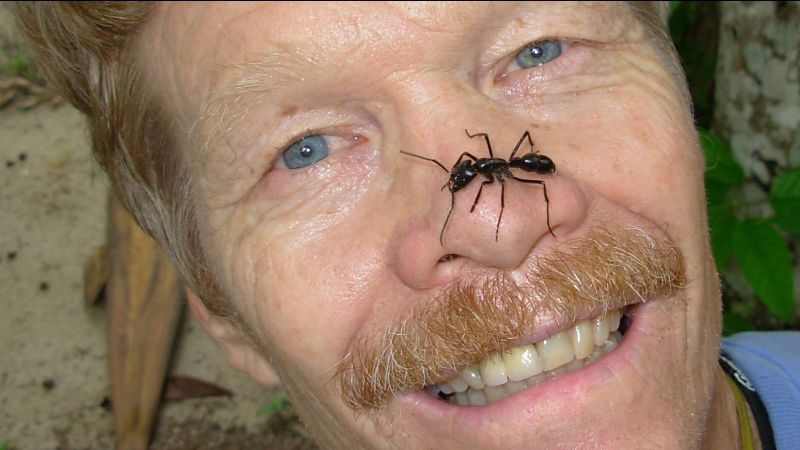The Stinging Feeling of Expertise

Make a list of things you want to do today — not just chores you want to accomplish, but also some fun things, too. I think it’s safe to bet that “getting stung by a bee” isn’t on that list. When threatened, bees will jab you with their barbed stingers which, in and of themselves, can cause a good deal of pain. (Here’s a comparison of a bee stinger and a hypodermic needle at roughly equal magnification, and as you can see, the stinger — on the left — isn’t designed to smoothly enter your body.) And the stab itself isn’t the worst part of a bee sting. The stinger delivers venom into its target, and, as the Mayo Clinic explains, “bee sting venom contains proteins that affect skin cells and the immune system, causing pain and swelling around the sting area. In people with a bee sting allergy, bee venom can trigger a more-serious immune system reaction.”
So, yeah, getting stung by a bee isn’t on your to-do list.
The same is true for Justin O. Schmidt, pictured above with an ant on his nose. Like you and me, he tries to avoid bee stings and other insect attacks. But Schmidt, unlike most everyone else, doesn’t seem very good at it. He’s been stung by bugs, by his own estimation, more than 1,000 times.
Schmidt is an entomologist — a scientist that studies insects — and specifically, he’s an entomologist who focuses on “a group of insects called Hymenoptera — we know them as stinging ants, wasps, and bees,” as summarized by NPR. As a result, he spends a lot of time with stinging insects, and therefore, gets stung a lot more than most other people do. Given that he was already studying the bugs, he figured he should probably study their stings, too. As he told Guinness World Records, he “wanted to find out whether the most painful stings are also the ones that can do the most damage,” and to do that, he needed to find a way to measure which stings were the most painful. No such index of relative pain existed, so Schmidt decided to create one himself. Every time an insect jabbed him, Schmidt recorded the experience in a journal and ranked the sting on a scale of zero to four. A zero meant that try as it might, the bug couldn’t pierce his skin. A typical honey bee sting rated in at a two. And a four? Schmidt described that to Great Big Story, calling it “absolutely, excruciatingly debilitating, incapacitating, just shuts you down, just absolute sheer pain, there’s just nothing you can really do about that.”
To date, Schmidt has been stung by roughly 150 types of insects and has only identified three species of insects that can deliver a level-four result. Per The Straight Dope, there is “the warrior wasp (Synoeca septentrionalis), a two-and-a-half-inch-long black bug found in the tropics; the bullet ant (Paraponera clavata), also tropical; and the tarantula hawk (genus Pepsis), two inches long, which Schmidt can find in his yard in Tucson.” Schmidt typically rates the bullet ant as the worst of the bunch, describing the pain as “pure, intense, brilliant pain…like walking over flaming charcoal with a three-inch nail embedded in your heel” in his book, The Sting of the Wild. But according to one observer (me), the sting of the warrior wasp sounds even worse; Schmidt describes it as “torture; you are chained in the flow of an active volcano” and asks himself, “why did I start this list?”
A shortened version of his list, with some silhouettes of the insects in question, can be found here. You’re probably better off flipping through that website than trying to reproduce the data yourself. Getting stung over and over isn’t fun, and it doesn’t get easier, either. When Guinness asked Dr. Schmidt if “[his] pain threshold for stings increased over the years,” he answered with a single word: “No.”
Bonus fact: It’s true that worker honey bees die when they sting humans; as Mental Floss explains, “when the bee stings you, its stinging apparatus screws into your skin like a corkscrew. The bee is too weak to pull it out without tearing its abdomen apart.” If that seems counterproductive, it probably is — but that’s probably because humans aren’t the major predator that bees are worried about. Mental Floss continues: “when the bee stings an animal or insect with skin much thinner than human skin, it can easily pull out and fly off without dying.”
From the Archives: Bee Fence: Elephants also are not fans of bee stings. And we can use that information against them!
